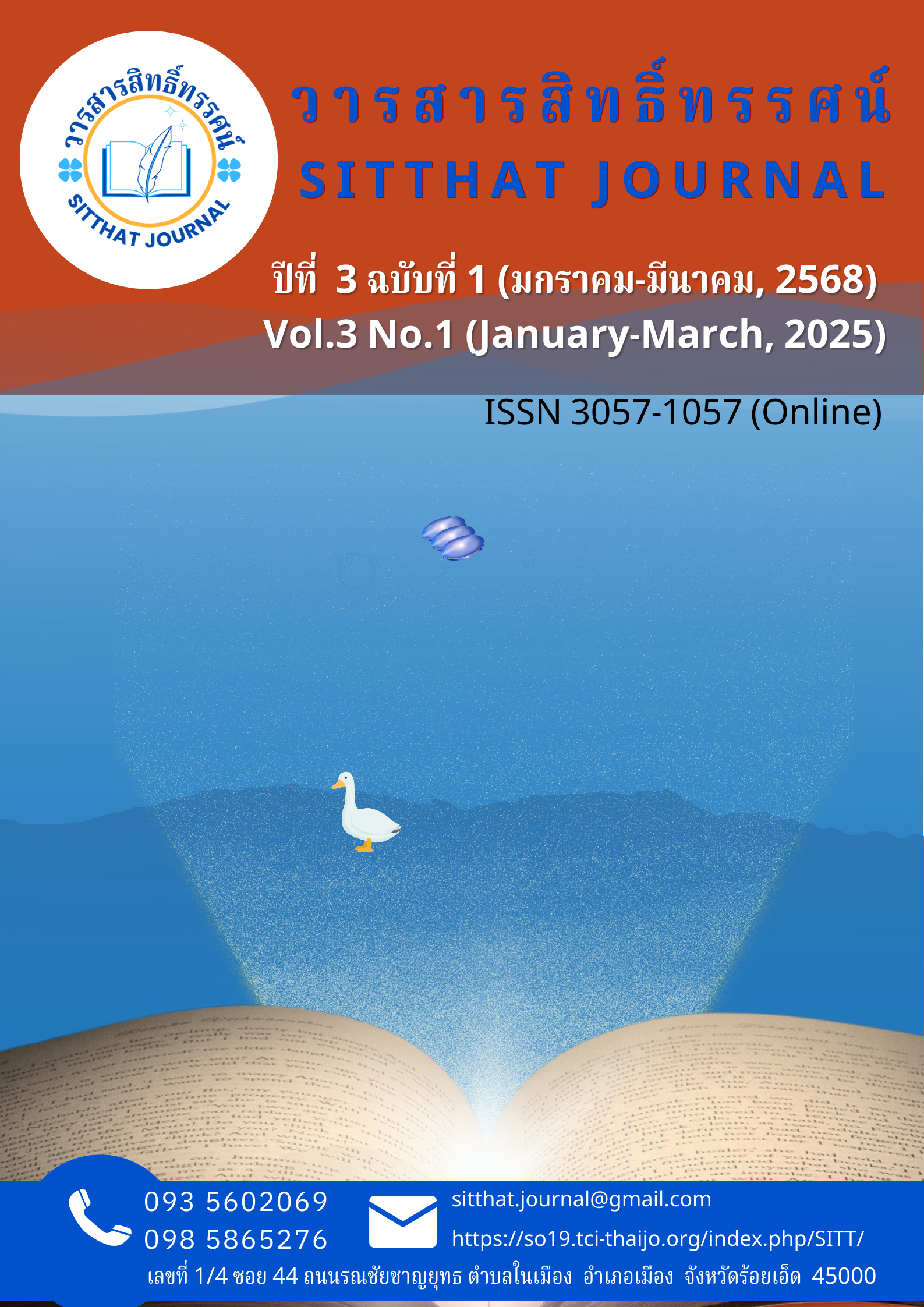CREATING EQUAL OPPORTUNITIES AND EDUCATIONAL EQUALITY FOR ALL AGES IN THE DIGITAL AGE IN THE EDUCATIONAL SERVICE AREA 3, BURIRAM PROVINCE
Main Article Content
Abstract
This research aims to 1) study the level of creating equal opportunities and equality, 2) study the factors affecting the creation of equal opportunities and equality, and 3) study the development guidelines for creating equal opportunities and equality in education for all ages in the digital age in the Educational Service Area 3, Buriram Province. It is a mixed-method research. The sample consists of 313 people and 20 interviewees. The interview method is used. The research instruments are questionnaires and interview forms. The statistics used for data analysis are frequency, percentage, mean, standard deviation, multiple regression analysis using the hierarchical variable selection method, and content analysis.
The research results found that: (1) the level of creating equal opportunities and educational equality for all ages in the digital age is at a moderate level overall. (2) Factors affecting the creation of equal opportunities and educational equality for all ages in the digital age include education management for social and national security (X1), creating equal opportunities and equality (X4), developing the potential of people of all ages (X3), and developing the efficiency of the education management system (X6), with coefficients of predictors in the raw scores (b) equal to 1.225, .850, .700, and .463, respectively. (3) The guidelines consist of (1) creating clarity of policies and implementation focuses. (2) Setting goals for solving problems in the implementation of policies and focuses. (3) Determining steps and action plans. (4) Educational institutions seriously implement policies and focuses. (5) There is monitoring and evaluation in the process that is directly consistent with policies and focuses according to the standards. (6) Creating a project that specifies objectives, goals, products, and outcomes that are clearly consistent with the process. and regularly evaluate the policy (7) Follow up, inspect, evaluate and supervise the implementation of the policy and focus points continuously (8) Plan for educational institutions to play a role in driving the policy and focus points and have related agencies evaluate the results, summarize the report (9) Report the results of the project/activity in creating opportunities for equality and educational equality at all ages in the digital age to related agencies and (10) Analyze data and take appropriate action to solve students' problems.
Article Details
References
กัญภร เอี่ยมพญา และคณะ. (2564). ผลกระทบของโลกาภิวัตน์ต่อการจัดการศึกษา. วารสารการศึกษาและ
พัฒนาสังคม. 35(2), 352.
กัลยา วานิชย์บัญชา.(2560). การวิเคราะห์สถิติชั้นสูงด้วย SPSS for Window (พิมพ์ครั้งที่ 12). กรุงเทพฯ:
ห้างหุ้นส่วนจํากัด สามลดา.
จีรวิทย์ มั่นคงวัฒนะ. (2555). การบริหารสถานศึกษาเพื่อความเป็นเลิศ. กรุงเทพฯ: ครีเอทีฟคอมมอนส์.
ประพันธ์ศิริ สุเสารัจ. (2551). การพัฒนาการคิด. พิมพ์ครั้งที่ 2. กรุงเทพฯ: ห้างหุ้นส่วนจํากัด.
พิชิต สนั่นเอื้อ. (2562 - 2563).รูปแบบการพัฒนาครูผู้สอนในการใช้เทคโนโลยีดิจิทัลเพื่อการจัดการเรียนรู้
สำหรับผู้เรียนที่มีความต้องการจำเป็นพิเศษของศูนย์การศึกษาพิเศษประจำจังหวัดอุดรธานี. ศูนย์
การศึกษาพิเศษประจำจังหวัดอุดรธานี สำนักบริหารงานการศึกษาพิเศษ สำนักงานคณะกรรมการ
การศึกษาขั้นพื้นฐาน กระทรวงศึกษาธิการ.
พิณสุดา สิริธรังศรี. (2558). แก่นการจัดการศึกษา ชุดโครงการการจัดการศึกษาแบบมีส่วนร่วม : การศึกษา
เพื่อสุขภาวะเด็กและเยาวชน. กรุงเทพฯ: DPU Coolprint มหาวิทยาลัยธุรกิจบัณฑิตย์.
พิมพ์พันธ์ เดชะคุปต์. (2554). การเรียนการสอนที่เน้นผู้เรียนเป็นสำคัญ. กรุงเทพฯ : เดอะมาสเตอร์กรุ๊ฟ
แมเนจ.
มนตรี รอดแก้ว. และคณะ (2023). การพัฒนากิจกรรมการปรับพฤติกรรมเชิงจริยธรรมด้านความมีวินัย
ในตนเอง ทักษะชีวิต และความรู้สึกเห็นคุณค่าในตนเองของนักศึกษา มหาวิทยาลัยมหามกุฏราช
วิทยาลัย. วารสารสถาบันวิจัยพิมลธรรม, 10(2), 37–50.
ภควรรณ อยู่เย็น. (2563). การพัฒนาสมรรถนะครูด้านดิจิทัลของโรงเรียนบ้านห้วยไผ่อำเภอไชยปราการ
จังหวัดเชียงใหม่. วิทยานิพนธ์ครุศาสตรมหาบัณฑิต สาขาการบริหารการศึกษา.เชียงใหม่:
มหาวิทยาลัยราชภัฏเชียงใหม่.
ศุภกฤต ดิษฐสุวรรณ และคณะ. (2565). รูปแบบการพัฒนาสมรรถนะการใช้เทคโนโลยีดิจิทัลในการจัดการ
เรียนรู้ของครูเพื่อยกระดับคุณภาพผู้เรียนโรงเรียนเตรียมอุดมศึกษาพัฒนาการสุวรรณภูมิ. Journal
of Roi Kaensarn Academi 8(3), 194 – 214.
สมหมาย ปวะบุตร. (2558). ตําราหลักการศึกษา. กรุงเทพฯ: มหาวิทยาลัยราชภัฏสวนสุนันทา.
สำนักงานเลขาธิการสภาผู้แทนราษฎร. (2560). รัฐธรรมนูญแห่งราชอาณาจักรไทย พุทธศักราช 2560.
กรุงเทพฯ: สานักการพิมพ์.
Yamane, Taro. (1973). Statistics an introductory analysis. New York Harper & Row.


